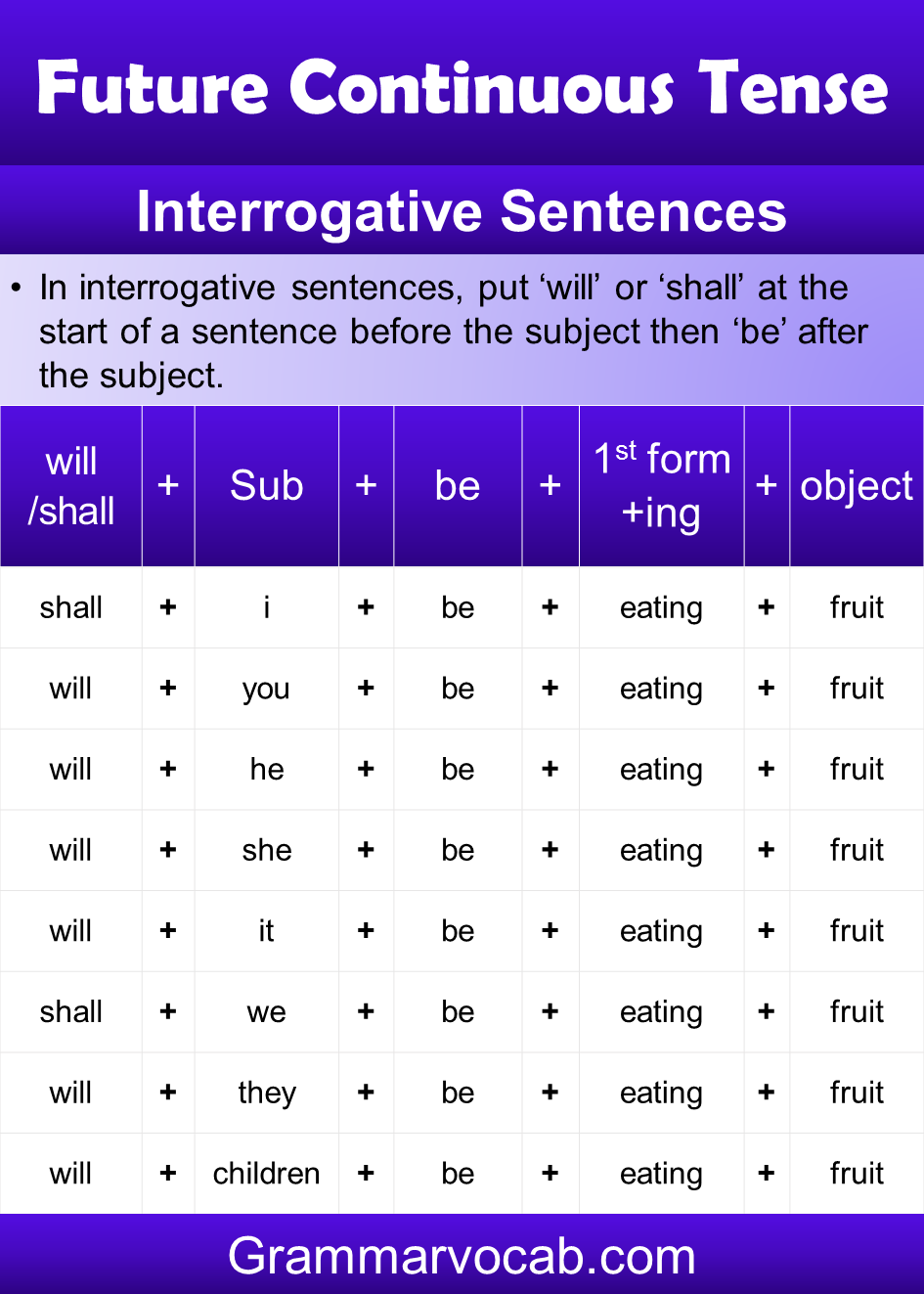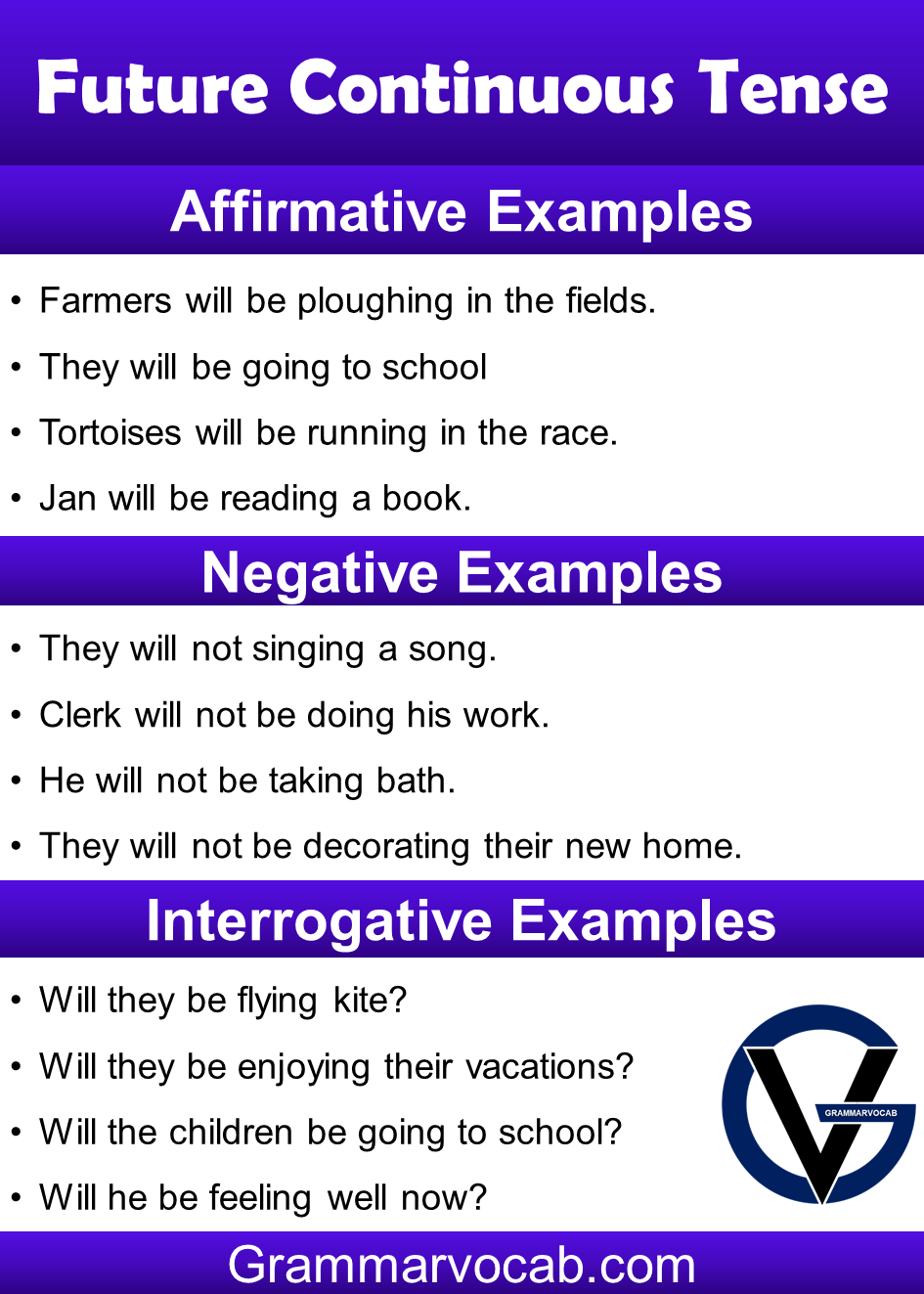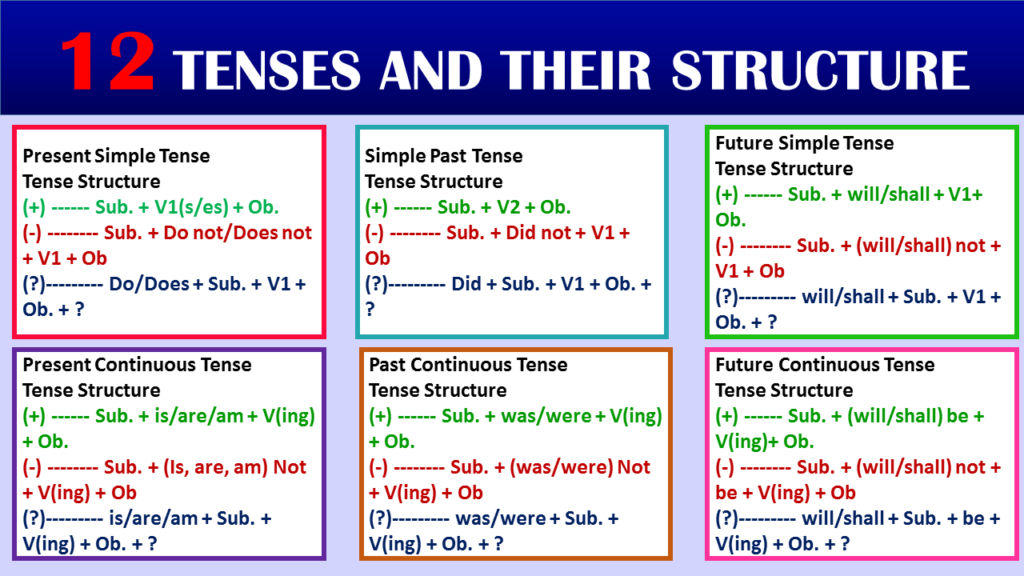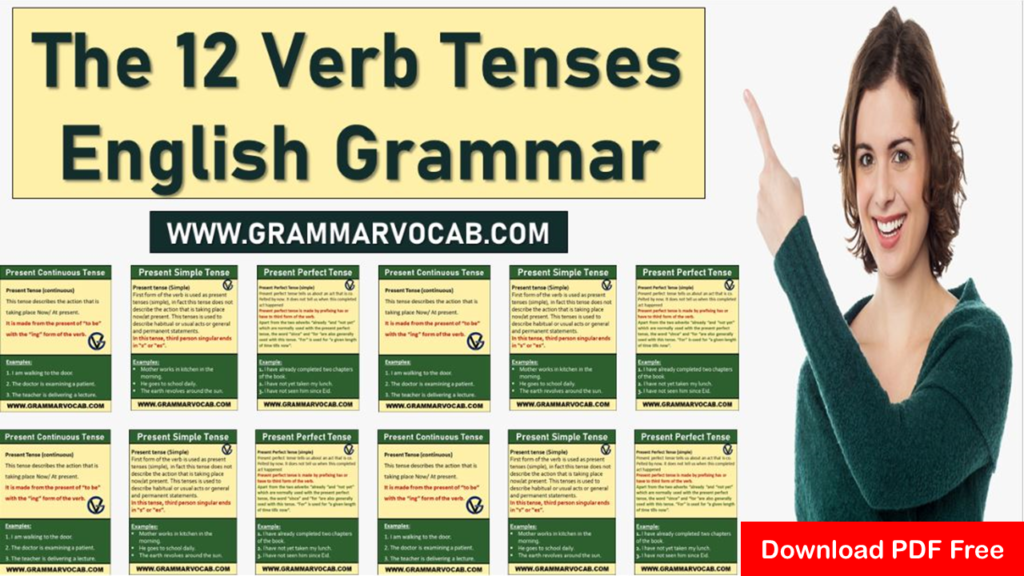Grammar plays a crucial role in effective communication. Understanding different verb tenses is essential for expressing actions in various time frames. One of these tenses is the “Future Continuous Tense,” which allows us to describe actions that will be ongoing at a specific point in the future. In this article, we will delve into the definition, structure, and examples of the Future Continuous Tense in easy-to-understand English.
What is future continuous tense?
Future continuous tense is a tense that shows an action that will continue in the future.
- He will be sleeping.
Future Continuous Tense Structure
To form the Future Continuous Tense, you need two main components: the future auxiliary verb “will” and the base form of the main verb, along with the “-ing” suffix. Here is the basic structure:
[Subject] + [will] + [be] + [base form of the verb] + [-ing]
Future Continuous Affirmative Form
- First of all, translate the subject and put ‘will be’ or ‘shall be’ according to the subject. ‘will be’ is used with he, she, it, they, or any noun, and ‘shall be’ is used with I and we.
- In the cause of stress or strong decision then replace will be with shall be.
- Use ‘ing’ with the basic form of the verb.
Formula: Subject + will be/shall be + Basic form of verb+ing + object.
Examples
- They will be going to school
- Tortoises will be running in the race.
- Jan will be reading a book.
- They will be cutting the rope with a knife.
- The snow will be melting on the mountains.
- It will be raining in Lahore.
- They will be arranging a party.
- He will be flattering the officer.
- They will be abusing me.
- I shall be eating pineapple fruit.
- You will be eating pineapple fruit.
- He will be eating pineapple fruit.
- She will be eating pineapple fruit.
- It will be eating pineapple fruit.
- We shall be eating pineapple fruit.
- They will be eating pineapple fruit.
- Children will be eating pineapple fruit.
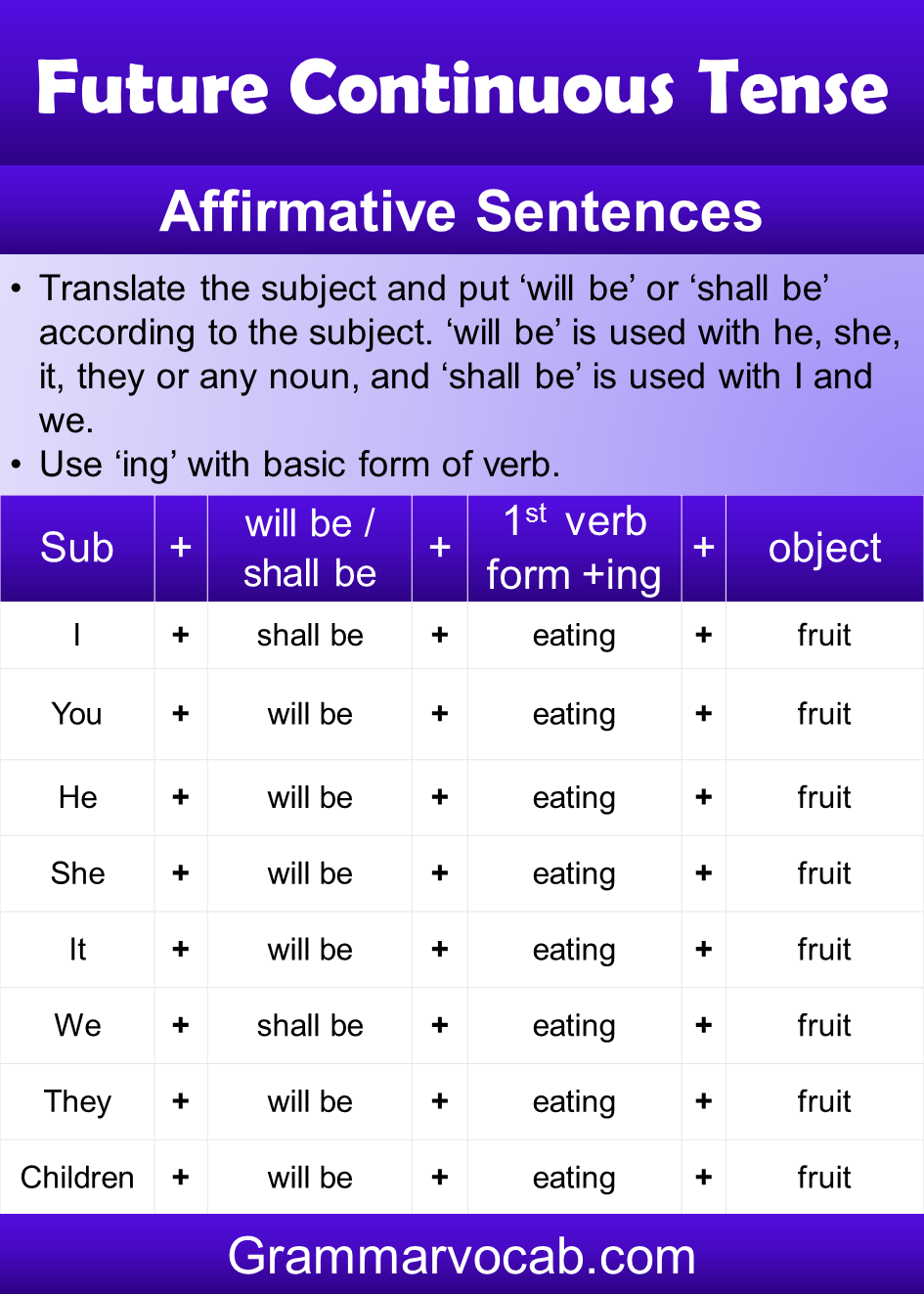
Future Continuous Negative Form
In negative sentences of this tense, place ‘not’ in the middle of ‘will be’ and ‘shall be’ and use the basic form of the verb with ‘ing’.
Formula: Subject + will/shall + not be + Basic form of verb + ing + object.
Examples:
- I shall not be eating pineapple fruit.
- You will not be eating pineapple fruit.
- He will not be eating pineapple fruit.
- She will not be eating pineapple fruit.
- It will not be eating pineapple fruit.
- We shall not be eating pineapple fruit.
- They will not be eating pineapple fruit.
- Children will not be eating pineapple fruit.
- They will not be singing a song.
- The clerk will not be doing his work.
- He will not be taking bath.
- They will not be decorating their new home.
- It will not be raining.
- We shall not be plucking the flowers.
- The butterfly will not be sucking the juice of flowers.
- I shall not be arranging a party.
- He will not be mending the shoes.
- We shall not be polishing the shoes.

Future Continuous Interrogative Form
In interrogative sentences, put ‘will’ or ‘shall’ at the start of a sentence before the subject and then ‘be’ after the subject.
Use the first form of the verb with ‘ing’ and also put the interrogative sign at the end of the sentence.
Formula: Will/Shall + Subject + be + Basic form of verb + ing + Object
Examples
- Shall I be eating pineapple fruit?
- Shall you be eating pineapple fruit?
- Will he be eating pineapple fruit?
- Will she be eating pineapple fruit?
- Will it be eating pineapple fruit?
- Will we be eating pineapple fruit?
- Will they be eating pineapple fruit?
- Will children be eating pineapple fruit?
- Will they be flying kites?
- Will they be enjoying their vacations?
- Will the children be going to school?
- Will he be feeling well now?
- Shall we be lending rupees?
- Will he be reciting the Holy Book?
- Shall we be catching the butterflies?
- Shall we be arraigning a program?
- Shall we be bathing the dog?
- Will Ali be driving the bus?
- Shall we be punishing the children?
- Will they be knitting the sweater?
Usage Tips
- Use the Future Continuous Tense when you want to emphasize the ongoing nature of an action in the future.
- Remember that “will” is the auxiliary verb used for future tenses. Without “will,” you cannot create the Future Continuous Tense.
- It is often used with time expressions such as “at,” “by,” “in,” “next,” or “this time tomorrow” to specify when the action will take place.
Must Try:
Future Indefinite Tense
Future Perfect Tense
Future Perfect Continuous Tense
Future Continuous Tense | Images
